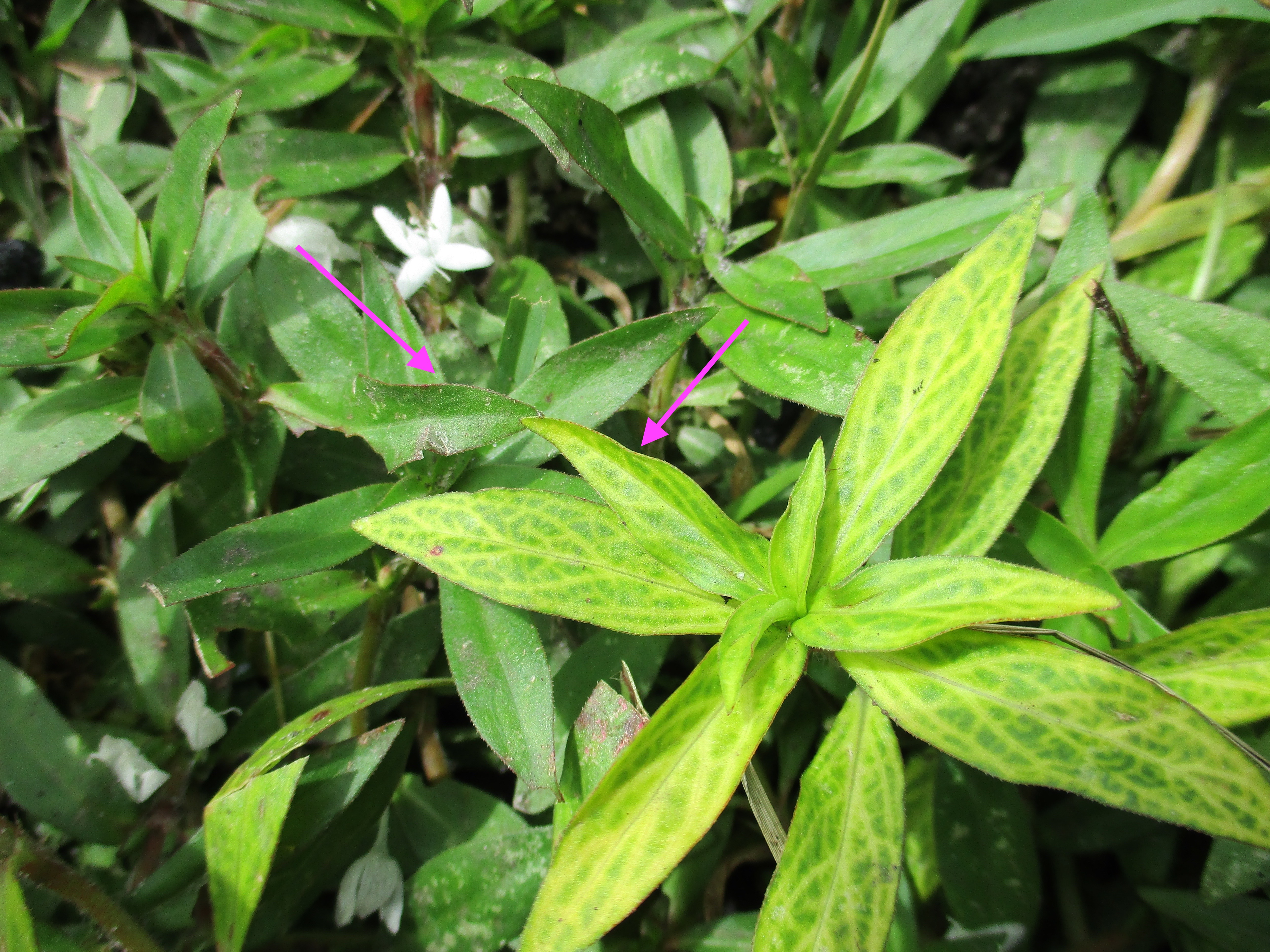Virginia Buttonweed
go.ncsu.edu/readext?738148
en Español / em Português
El inglés es el idioma de control de esta página. En la medida en que haya algún conflicto entre la traducción al inglés y la traducción, el inglés prevalece.
Al hacer clic en el enlace de traducción se activa un servicio de traducción gratuito para convertir la página al español. Al igual que con cualquier traducción por Internet, la conversión no es sensible al contexto y puede que no traduzca el texto en su significado original. NC State Extension no garantiza la exactitud del texto traducido. Por favor, tenga en cuenta que algunas aplicaciones y/o servicios pueden no funcionar como se espera cuando se traducen.
Português
Inglês é o idioma de controle desta página. Na medida que haja algum conflito entre o texto original em Inglês e a tradução, o Inglês prevalece.
Ao clicar no link de tradução, um serviço gratuito de tradução será ativado para converter a página para o Português. Como em qualquer tradução pela internet, a conversão não é sensivel ao contexto e pode não ocorrer a tradução para o significado orginal. O serviço de Extensão da Carolina do Norte (NC State Extension) não garante a exatidão do texto traduzido. Por favor, observe que algumas funções ou serviços podem não funcionar como esperado após a tradução.
English
English is the controlling language of this page. To the extent there is any conflict between the English text and the translation, English controls.
Clicking on the translation link activates a free translation service to convert the page to Spanish. As with any Internet translation, the conversion is not context-sensitive and may not translate the text to its original meaning. NC State Extension does not guarantee the accuracy of the translated text. Please note that some applications and/or services may not function as expected when translated.
Collapse ▲Virginia buttonweed (Diodia virginiana) has a high profile by early October, for two reasons. First, plants are producing tiny white flowers in great abundance this time of year. Secondly, a high percentage of Virginia buttonweed plants are infected with a virus that causes a distinct yellowing of the foliage, and this becomes noticeable in late summer. Virginia buttonweed is widespread in the Eastern U.S., and in lawns is especially encouraged by conditions such as compacted soils, poor drainage, and excessive irrigation. It is known to be exceptionally difficult to control with chemicals, so consideration of site conditions and cultural practices needs to be part of your management program. Refer to the Virginia buttonweed information note from Clemson Cooperative Extension for an excellent overview of home lawn management options. See the images below for assistance with identification. Samples can also be dropped off to your nearest N.C. Cooperative Extension Center.






